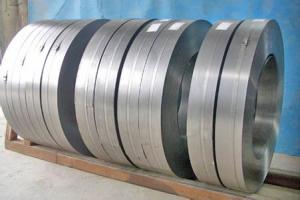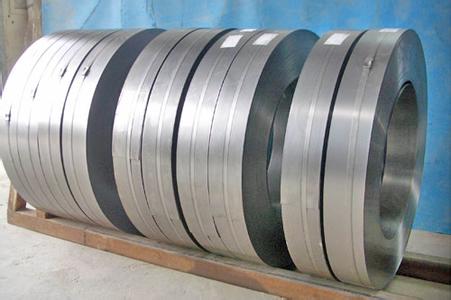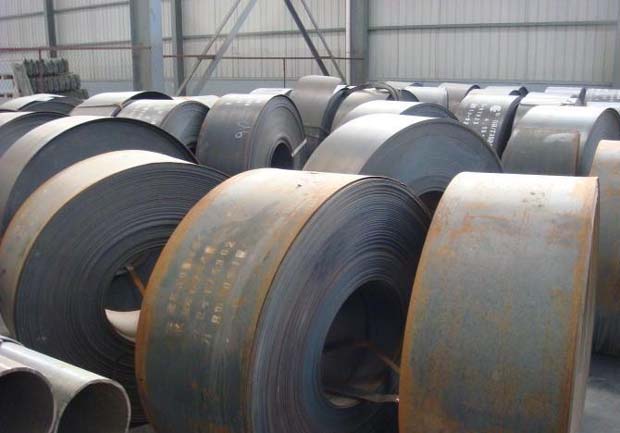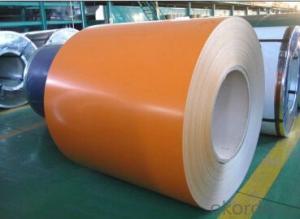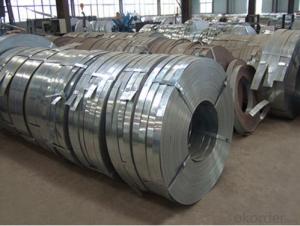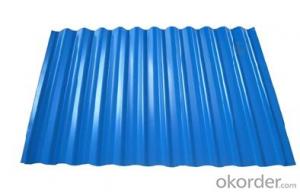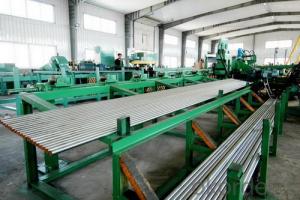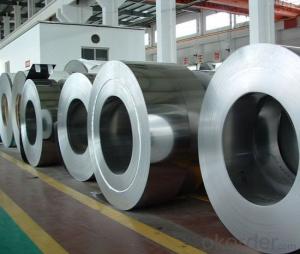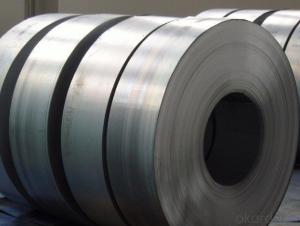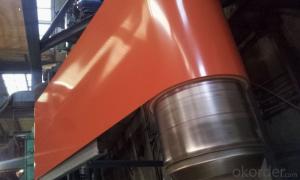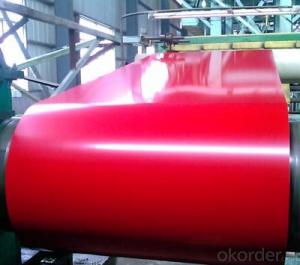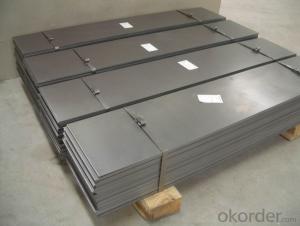Hot rolled strip
- Loading Port:
- China Main Port
- Payment Terms:
- TT OR LC
- Min Order Qty:
- -
- Supply Capability:
- -
OKorder Service Pledge
OKorder Financial Service
You Might Also Like
Hot rolled strip
1, hot rolled ordinary carbon structural steel (GB3524-83)
Hot rolled plain carbon steel with ordinary carbon structural steel as material,made of 1.80-6.00mm hot rolled strip thickness, width of 50-1200mm.
1) the main purposes
(2) grade and chemical composition of materials
Standards and grades
National standard
Quite foreign standard
Function and use
Material categories
The implementation of standards
Grade
Standard No.
Grade
Suitable for manufacturing of cold forming parts
Low carbon steel coil
Q/BQB302
SPHC
JISG3131
SPHC
SPHD
SPHD
SPHE
SPHE
SAE1006/SAE1008
SAE1006/SAE1008
XG180IF/200IF
XG180IF/200IF
Steel for general structure
GB/T912-1989
Q195
JISG3101
SS330
For general construction of buildings, bridges, ships, vehicles, etc.
Q235B
SS400
SS400
SS490
ASTMA36
SS540
Mainly used for cold rolling blank, cold-formed steel billet, welded steel pipebillet and bicycle, hardware products manufacturing.
- Q: Can steel strips be galvanized?
- Yes, steel strips can be galvanized. Galvanizing is a process in which a protective coating of zinc is applied to steel to prevent it from rusting or corroding. This process can be done on various forms of steel, including steel strips.
- Q: Are steel strips commonly used in the manufacturing of industrial equipment?
- Yes, steel strips are commonly used in the manufacturing of industrial equipment. They are highly versatile and offer excellent strength, durability, and resistance to wear and tear, making them ideal for various applications in the industrial sector. Steel strips are often used for constructing frames, supports, brackets, and other components in industrial machinery and equipment.
- Q: How do steel strips respond to different machining processes?
- Steel strips respond differently to different machining processes depending on factors such as the type of steel, the specific machining method used, and the desired outcome. Generally, steel strips can be machined through processes like cutting, drilling, milling, and grinding. However, each process may have varying effects on the steel strips, such as changes in surface finish, dimensional accuracy, and mechanical properties. It is crucial to carefully select the appropriate machining process and parameters to ensure optimal results for steel strips.
- Q: Can steel strips be welded or joined together?
- Yes, steel strips can be welded or joined together using various welding techniques such as arc welding, gas welding, or resistance welding.
- Q: What are the different forming processes for steel strips?
- There are several different forming processes for steel strips, including hot rolling, cold rolling, and annealing. Hot rolling involves heating the steel above its recrystallization temperature and then passing it through a series of rollers to reduce its thickness and shape it into a strip. Cold rolling, on the other hand, involves passing the steel through rollers at room temperature, which increases its strength and improves its surface finish. Annealing is a heat treatment process that involves heating the steel strip to a specific temperature and then slowly cooling it to relieve internal stresses and improve its ductility. These forming processes allow steel strips to be manufactured in various dimensions and properties for different applications.
- Q: What are the common surface finishes for steel strips?
- Some common surface finishes for steel strips include mill finish, galvanized finish, painted finish, polished finish, and coated finish.
- Q: What is the tensile strength of galvanized steel strips?
- The tensile strength of galvanized steel strips can vary depending on the specific grade and thickness of the strips. However, typically, galvanized steel strips have a tensile strength ranging from 370 to 500 megapascals (MPa).
- Q: How do steel strips contribute to reducing material waste in various applications?
- There are several ways in which steel strips contribute to the reduction of material waste in various applications. To begin with, the manufacturing process of steel strips is highly efficient, requiring minimal raw material. Steel, being made from easily accessible iron ore, can be produced using a process that conserves resources. Additionally, the production of steel strips involves recycling scrap steel, further reducing the need for new raw materials. This effective resource utilization significantly decreases material waste. Furthermore, steel strips have a long lifespan and are highly durable. They can withstand harsh conditions, such as extreme temperatures, corrosion, and impact, without compromising their structural integrity. As a result, steel strips require less frequent replacement compared to other materials, ultimately reducing material waste in the long run. Moreover, steel strips are versatile and can be easily customized to fit specific requirements. They can be cut, shaped, and formed with precision, minimizing waste during the manufacturing process. Moreover, steel strips find extensive use in construction and infrastructure projects. By using steel strips as reinforcement in concrete structures, the amount of concrete required can be reduced. This not only decreases overall material waste but also results in cost savings and a reduced environmental impact due to the lighter weight of the structure. Additionally, steel strips are recyclable at the end of their life cycle. They can be melted down and used to produce new steel products, making them a sustainable choice. This ability to be recycled indefinitely further reduces material waste and conserves natural resources. In conclusion, steel strips contribute to the reduction of material waste in various applications through their efficient manufacturing process, durability, versatility, and recyclability. Their use in construction and infrastructure projects also promotes efficient resource utilization. By choosing steel strips, industries can make significant progress in minimizing material waste and promoting sustainability.
- Q: How do steel strips contribute to product reliability in various applications?
- Steel strips play a significant role in enhancing product reliability across multiple applications. There are several key aspects that contribute to their reliability. To begin with, steel strips are renowned for their exceptional strength and durability. They possess a high tensile strength, enabling them to endure heavy loads and resist deformation or breakage. This makes them extremely reliable, particularly in industries like construction, automotive, and machinery, where products face immense stress and pressure. Moreover, steel strips offer outstanding corrosion resistance. They can be coated with protective layers like zinc or chromium to prevent rust and corrosion. This is especially important in applications that are exposed to moisture, chemicals, or harsh environments. The corrosion resistance of steel strips ensures that the products manufactured from them have a longer lifespan, minimizing the need for frequent replacements and enhancing overall reliability. Furthermore, the uniformity and consistency of steel strips contribute significantly to product reliability. The manufacturing processes employed for steel guarantee that the composition and properties of the strips remain consistent throughout their length and width. This uniformity allows for precise engineering and manufacturing of products, ensuring that their dimensions and performance meet the required specifications. Whether it is electrical appliances, consumer goods, or precision instruments, the reliability of these products heavily relies on the consistent quality of the steel strips used in their construction. Additionally, steel strips possess excellent thermal conductivity. This property is particularly advantageous in applications where heat dissipation or transfer is crucial, such as in heat exchangers or electrical components. Steel strips effectively conduct heat, preventing overheating and enhancing the reliability and performance of the products. Finally, steel strips exhibit high versatility, offering a wide range of customization options. They can be easily formed, shaped, or cut to fit specific design requirements. This adaptability ensures that products can be manufactured with precision and tailored to specific needs, further enhancing their reliability. In summary, steel strips make a substantial contribution to product reliability due to their strength, corrosion resistance, uniformity, thermal conductivity, and versatility. These properties make steel strips an excellent choice for various applications where reliability and performance are crucial factors.
- Q: How are steel strips used in the manufacturing of consumer goods?
- Steel strips are commonly used in the manufacturing of consumer goods for various applications such as automotive parts, appliances, construction materials, and packaging. These strips are utilized to create strong and durable components, provide structural support, enhance product longevity, and ensure high-quality performance in consumer goods.
Send your message to us
Hot rolled strip
- Loading Port:
- China Main Port
- Payment Terms:
- TT OR LC
- Min Order Qty:
- -
- Supply Capability:
- -
OKorder Service Pledge
OKorder Financial Service
Similar products
Hot products
Hot Searches
Related keywords
